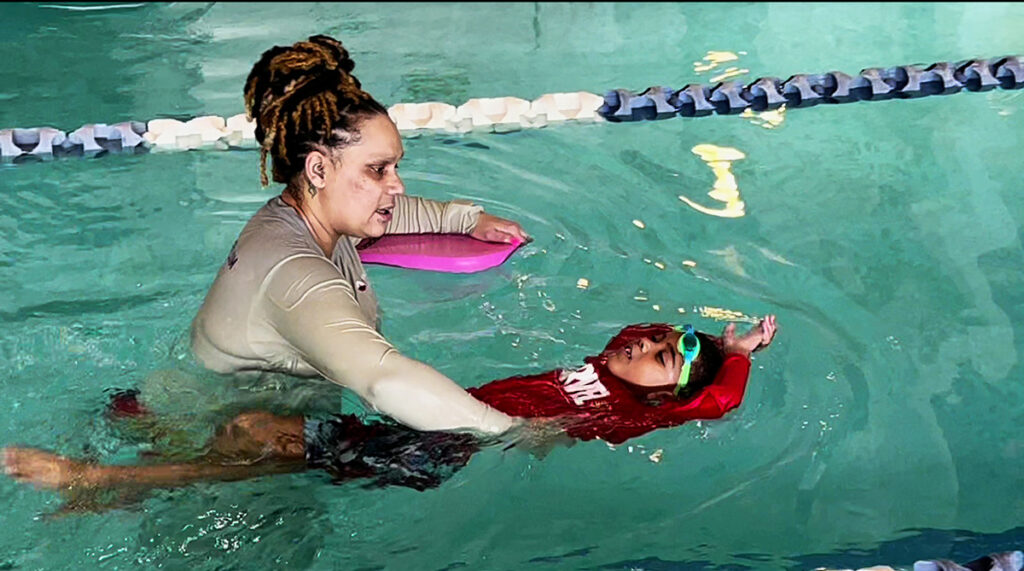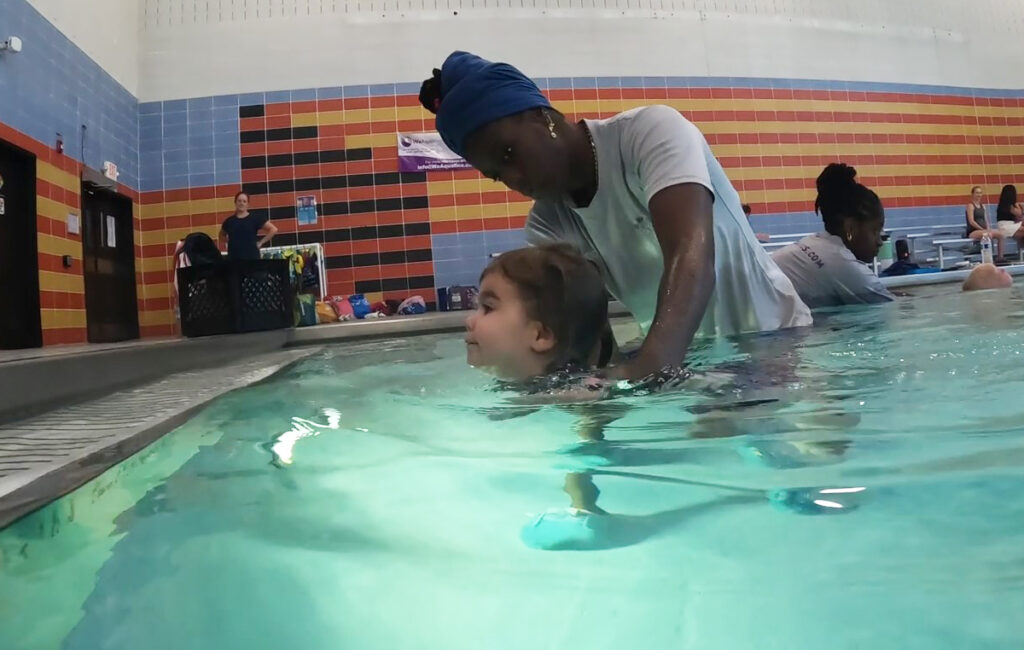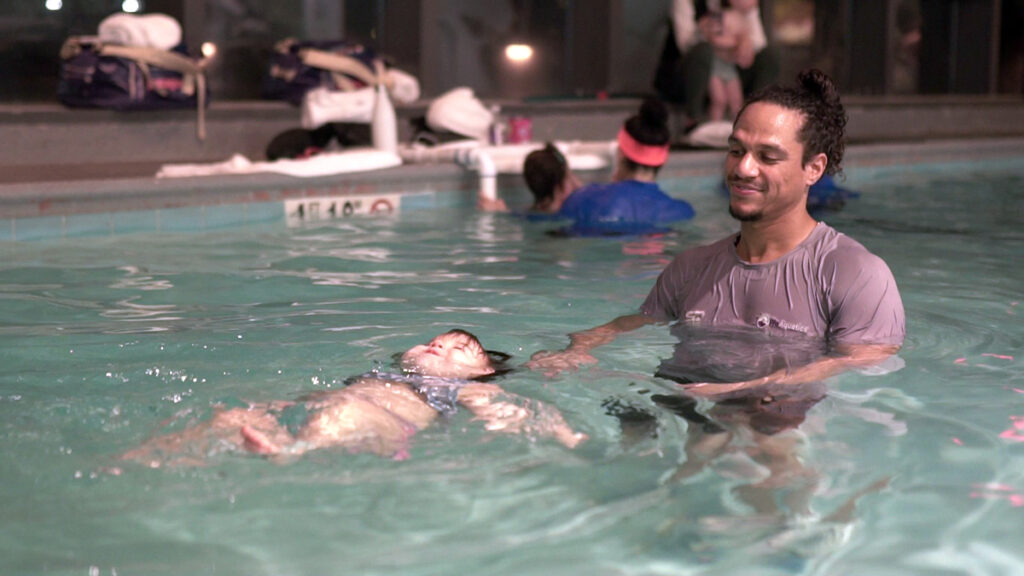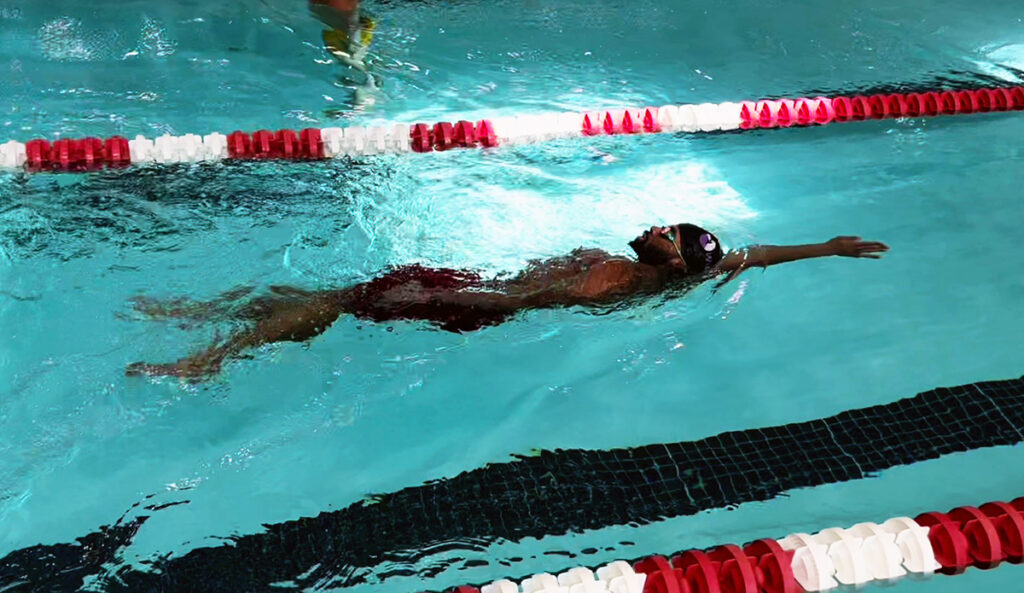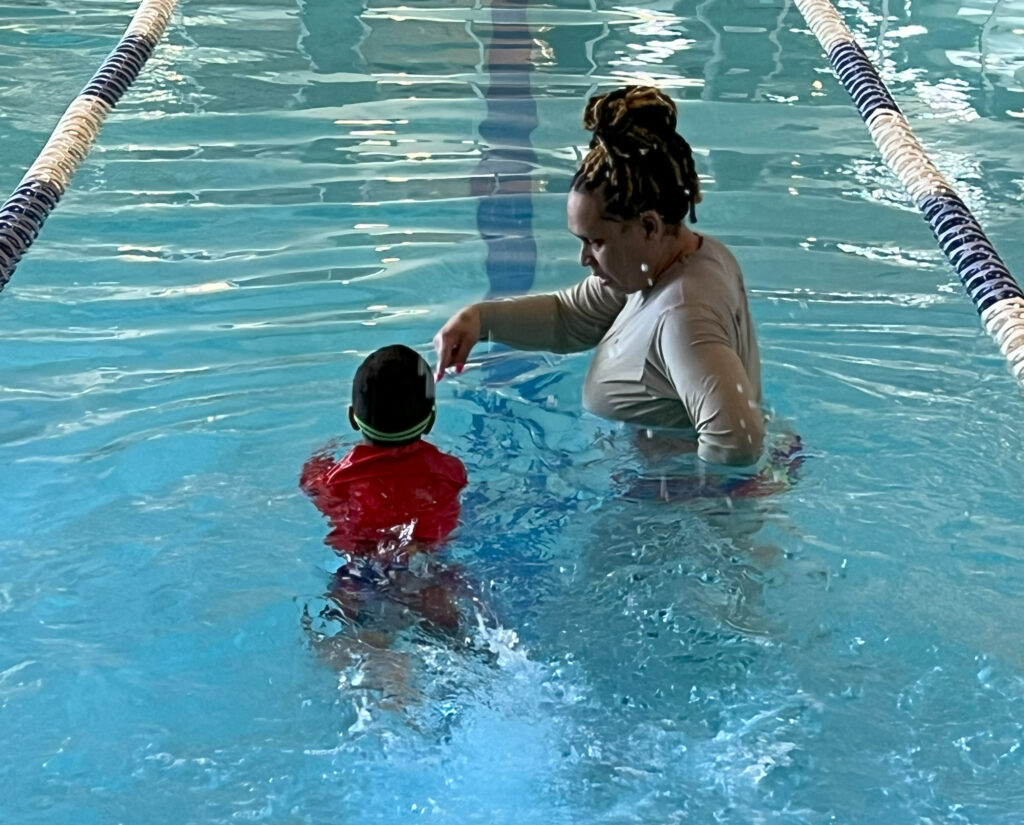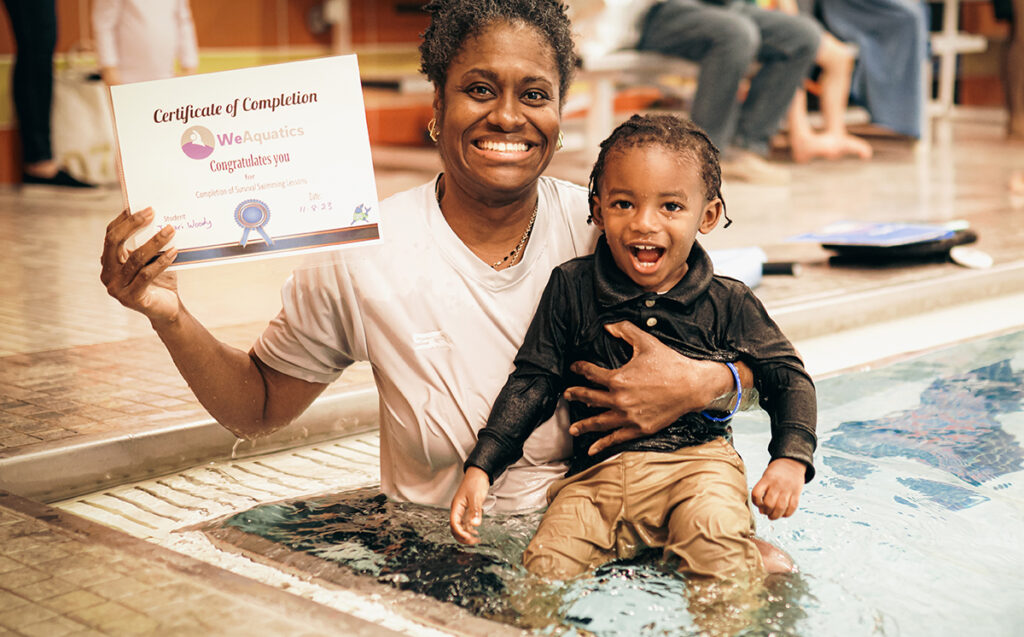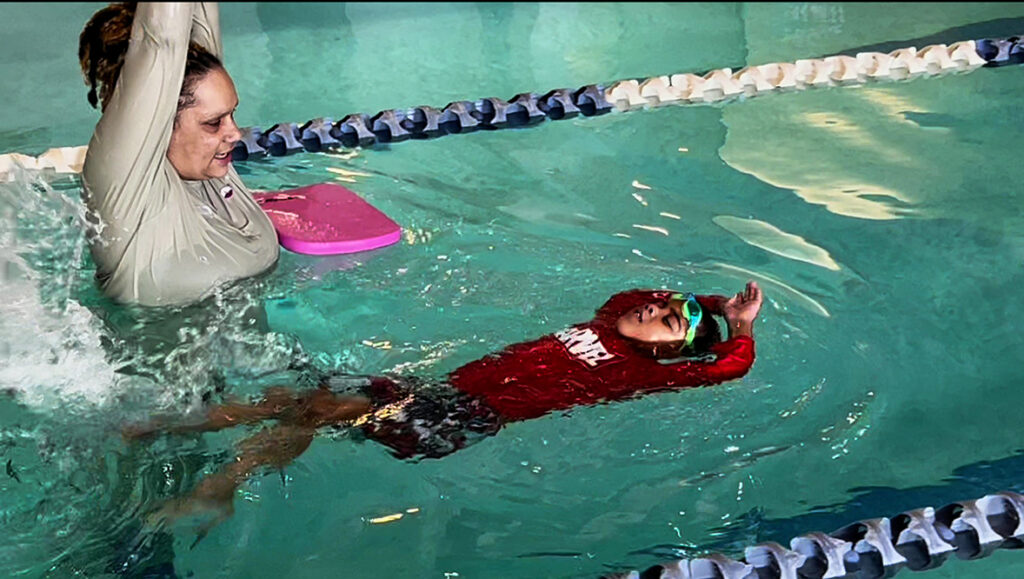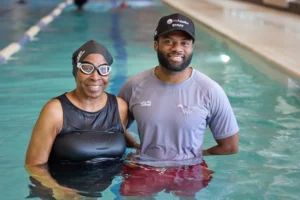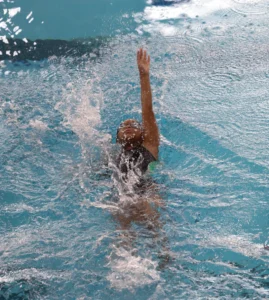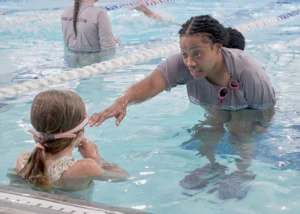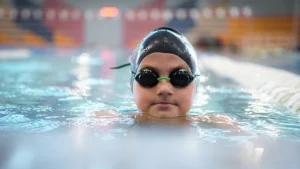Goal Setting for Swimmers: How Olympic Swimmers Set Goals for Success
There’s one trick every elite swimmer uses to enhance their performance and achieve greatness: goal setting.
Learning to swim is an exciting journey that can lead to a lifetime of aquatic adventures, a healthy lifestyle, and strong safety skills.
But setting swimming goals is a powerful way to build confidence, accelerate your abilities, and stay motivated, whether for young children in Infant Swimming Resource™ (ISR) or older children and adults in Learn-to-Swim (LTS) lessons.
Let’s make the most of your classes at WeAquatics and explore effective goal-setting strategies that will help swimmers of all ages and stages.
Why Goal Setting for Swimmers is Important
Goal setting is essential for success in any sport, and swimming is no exception.
By establishing clear, achievable goals, you give yourself a roadmap to follow and a way to measure your progress.
This sense of direction and accomplishment can boost your confidence and motivation, making the learning process more enjoyable and rewarding.
Swimming is primarily an individual sport, which means you can set personal goals tailored to your unique abilities and interests without coordinating with teammates or a team’s objectives.
Age-Appropriate Goal Setting
When setting swimming goals, it’s important to consider the swimmer’s age and developmental stage.
For ISR swimmers (six months to four years old), goals should focus on essential water survival skills and confidence. Parents can also help their little ones with these goals outside of class.
These may include:
- Floating independently
- Rolling from front to back
- Swimming to the side of the pool
For LTS swimmers (typically four years and older), goals can be more specific and challenge-oriented.
These may include:
- Mastering proper breathing technique
- Developing a strong kick
- Swimming a certain distance without stopping
- Learning a new stroke, such as backstroke or breaststroke
WeAquatics’ instructors work with your child’s unique abilities and skill sets in personalized, one-on-one classes to help accelerate their progress and achieve their swimming goals quickly.
SMART Goal Setting for Swimmers
To maximize the effectiveness of your swimming goals, use the SMART method: Specific, Measurable, Achievable, Relevant, and Time-Bound.
Here’s how to apply this framework to swimming:
Specific: Clearly define what you want to accomplish, for example, ‘swim 1 pool length of freestyle without stopping.’
Measurable: Quantify the goal so you can track your progress.
Achievable: Set goals that are challenging enough but realistic based on your current skill set.
Relevant: Choose goals that align with your overall swimming goals, like swimming faster or farther.
Time-Bound: Establish a date for achieving your goal to create a sense of urgency and commitment.
When you write out your specific goals, you are more likely to achieve them. When you go from goals like, ‘I want to swim fast’ to ‘I want to swim the 25-meter freestyle in 30 seconds.’ The goal isn’t just ‘fast.’ The goal becomes quantifiable— and that’s when you’re working to achieve measurable results.
This method for setting goals works inside and outside the pool!
Break Down Your Long-Term Goals for Swimming
Big, long-term goals can be intimidating for beginners.
Break them down into smaller, short-term milestones—just like your instructor does with you in class—to make them more manageable and build confidence.
For example, if your long-term goal is to swim 100 meters freestyle, start with a short-term goal of swimming 25 meters without stopping.
Once you’ve achieved this smaller goal, you can work on 50 meters, and so on, until you reach your long-term goal of 100 meters.
How Olympic Swimmers Set Goals
Goal setting for swimmers isn’t just for beginners.
Even the most accomplished swimmers like Michael Phelps and Cullen Jones rely on goal setting to maintain motivation and reach new heights in their careers.
Michael Phelps, the most decorated Olympian of all time, is known for his goal-setting habits. He writes down his swimming goals each day and views them several times to remind himself of what he wants to accomplish.
He also attributes his mental game and practicing visualization to help him prepare for meets and reach his goals.
Cullen Jones, a four-time Olympic medalist and the first Black individual to hold a world record in swimming, attributes much of his success to setting and pursuing ambitious goals.
‘Swimming has taught me about goal-setting. It has taught me that nothing comes easy. Every day that I go to practice, I know that I am training to take seconds off my time. I train for hours, weeks, months, just to drop a tenth of a second. It’s frustrating, but at the same time, I love it.’
Enlisting Your WeAquatics Instructor and Creating Accountability
Creating accountability with your swimming goals can be a powerful motivator. Share your swimming goals with your WeAquatics instructor, family, or friends.
When setting goals for swimming lessons, involve your experienced instructor. They want to help you achieve your target goals.
They can provide:
- Valuable insights
- Help you create realistic goals
- Provide guidance and support
Become a more active participant in your classes by creating your goals for swimming lessons. You can develop these goals when you work one-on-one with your instructor!
Think of your WeAquatics instructor as your partner in your swimming journey— they are dedicated to helping you build your confidence and reach your swimming goals.
Celebrate Progress and Learn from Setbacks
As you work toward your swimming goals, take a moment to recognize and celebrate your progress— no matter how small. Remember that Olympic swimmers train for months to shave as little as a fraction of a second off their time.
Acknowledging your achievements will boost your confidence and give you the motivation to set new goals. Consider keeping a swimming journal where you write down your goals and track them. Share your success with your instructor and supportive family and friends.
Setbacks are a natural part of the learning process. But it’s also an opportunity to recognize growth. When you experience a big challenge or fall short of your goal, take a moment to review what you can learn from the setback.
When you view failures with a growth mindset, you’ll build resilience and confidence to help you overcome obstacles.
WeAquatics is Your Swimming Goal Partner
Let lessons at WeAquatics be your first step in achieving your swimming goals. We are dedicated to helping swimmers achieve their goals, boost their aquatic confidence, and build a lifelong love of swimming.
Enroll today to start setting goals you can look back on in a year and be proud of how far you’ve come!

